The Everest High Pass Trek in Nepal presents an exhilarating challenge for seasoned trekkers seeking to explore the Himalayas. Spanning roughly 20 days, it brings adventurers through breathtaking landscapes and vibrant Sherpa communities while tackling three significant high passes. Those who embark on this journey not only experience the awe of iconic sights like Everest Base Camp and Gokyo Lakes but also test their physical limits. As they prepare for this remarkable adventure, they’ll soon discover key insights that could make all the difference in their trek.
Key Points
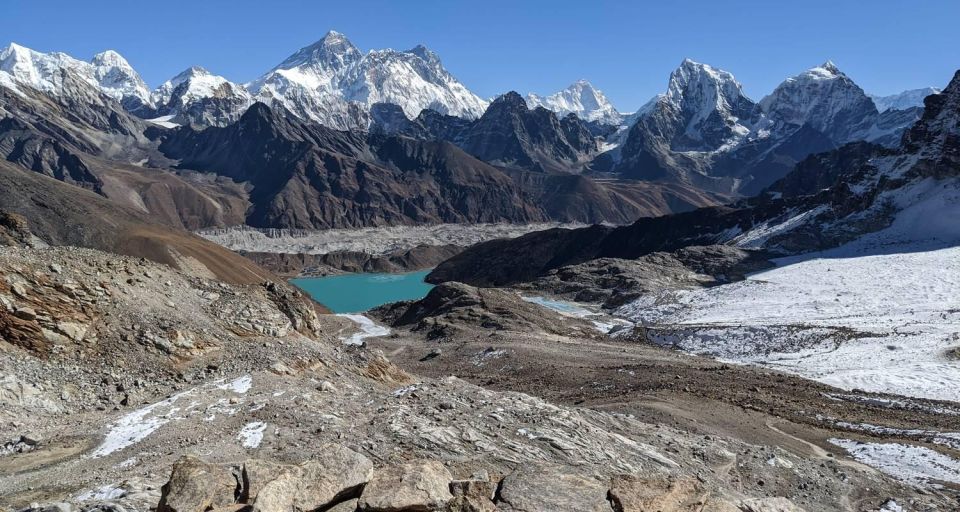
- The Everest High Pass Trek spans approximately 20 days, featuring three challenging high passes: Renjo La, Cho La, and Kongma La.
- Trekkers experience stunning landscapes, including rugged terrains, glacial views, and the beautiful Gokyo Lakes.
- The trek promotes culture through interactions with Sherpa communities and visits to sites like Tengboche Monastery.
- Optimal trekking seasons are spring (March-May) and autumn (late September-November) for better weather conditions and scenic beauty.
- Adequate physical fitness and acclimatization are crucial to prevent altitude sickness during this demanding trek.
It's also worth checking out some other tours and experiences nearby.
Trek Overview and Difficulty
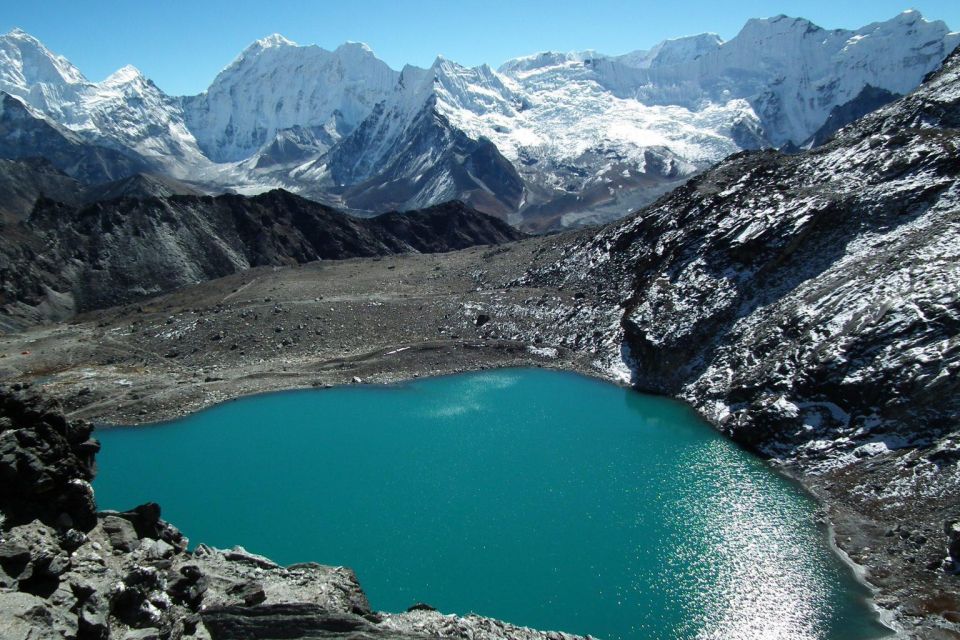
The Everest High Pass Trek is renowned for being one of the most challenging and exhilarating trekking experiences in Nepal, featuring three formidable high passes that test adventurers’ endurance and spirit.
Spanning approximately 20 days, this trek pushes trekkers to conquer Renjo La (5360m), Cho La (5420m), and Kongma La (5535m), each presenting unique challenges and breathtaking views.
The trek demands good physical fitness and acclimatization, as the high altitudes can lead to altitude sickness if not approached with caution.
Along the way, trekkers navigate rugged terrains, traverse glacial landscapes, and experience unpredictable weather patterns, all of which contribute to its reputation as a true adventure.
For those ready to embrace the challenge, the rewards are unforgettable.
Itinerary Highlights
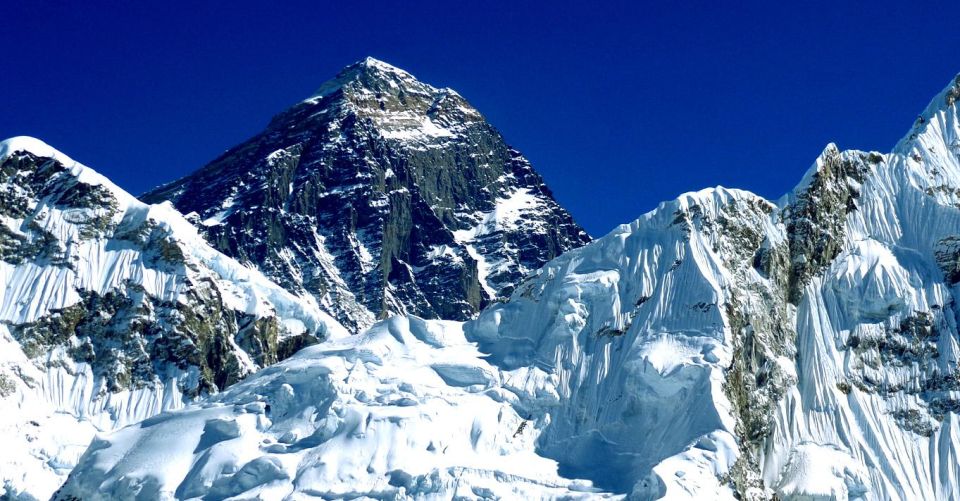
Starting in Kathmandu, the Everest High Pass Trek unfolds over 20 days, taking adventurers through breathtaking landscapes and vibrant local culture.
The journey kicks off with a flight to Lukla, followed by a trek to Phakding. As trekkers ascend to Namche Bazaar, they’ve the chance to explore this bustling hub.
The itinerary includes critical highlights like Tengboche, Dingboche, and Everest Base Camp, culminating with a hike to Kalapattar.
Over the following days, trekkers cross the challenging Cho La and Renjo La passes, ultimately reaching the stunning Gokyo Lakes and Gokyo Ri.
The trek wraps up as they descend back to Lukla, then return to Kathmandu for sightseeing, including visits to Kathmandu Durbar Square and Pashupatinath.
Cultural Experience
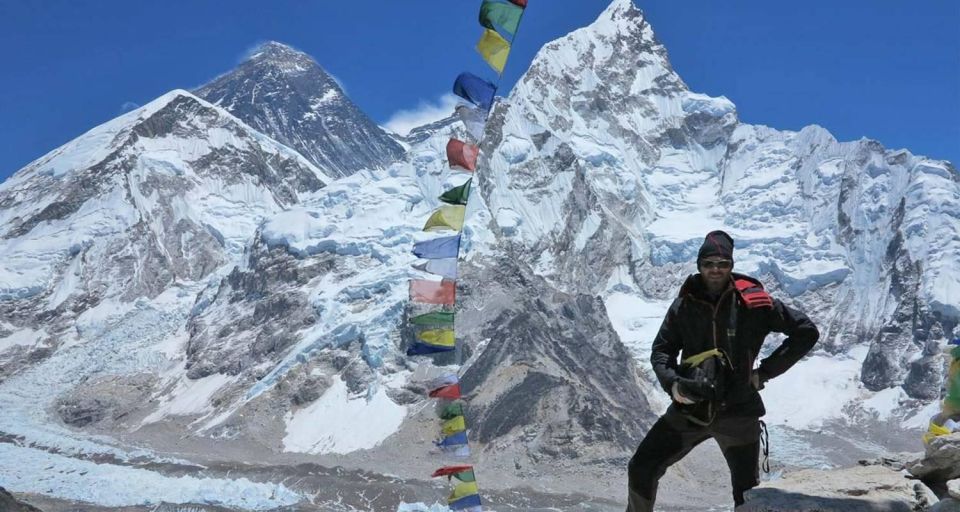
Experiencing the rich culture of the Sherpa people adds a unique layer to the Everest High Pass Trek, making each step of the journey even more meaningful.
Trekking through vibrant villages, trekkers connect with the local community and gain insights into their traditions and lifestyles. A visit to the Tengboche Monastery offers a glimpse into Buddhist culture, where one can witness monks in prayer and explore beautiful murals.
The warm hospitality of the Sherpas enhances the trek, as they share stories of their ancestors and the significance of the mountains. This culture not only enriches the adventure but also fosters a deep appreciation for the resilience and spirit of the Sherpa people, making the trek truly unforgettable.
Inclusions and Exclusions
Inclusions for the Everest High Pass Trek cover essential amenities, ensuring trekkers have a comfortable and well-supported journey through the majestic landscapes of Nepal.
Participants can expect a range of inclusions that enhance their experience, such as:
-
Airport transfers for seamless travel
-
3-star hotel accommodation in Kathmandu for a restful start
-
Guesthouse accommodation during the trek for local charm
-
A licensed English-speaking guide to navigate the trails
-
National park permits to explore the stunning Sagarmatha terrain
However, it’s important to note what isn’t included.
Travel insurance, meals during the trek, drinks, tips for staff, and personal expenses are the responsibility of each trekker, so planning ahead is key for a smooth adventure.
Booking Information
Booking the Everest High Pass Trek is straightforward, with prices beginning at Kč38,535 per person. Travelers can easily make reservations online, ensuring they secure their spot for this unforgettable adventure.
A significant perk is the option to reserve now and pay later, allowing trekkers to plan without the immediate financial burden. Plus, the trek offers a flexible cancellation policy—cancellations made up to 24 hours in advance receive a full refund.
It’s essential to check availability for desired dates and group sizes to avoid disappointment. With these user-friendly booking options, adventurers can focus on preparing for the breathtaking journey ahead, confident in their arrangements for this incredible trek in the Himalayas.
Essential Gear for Trekking
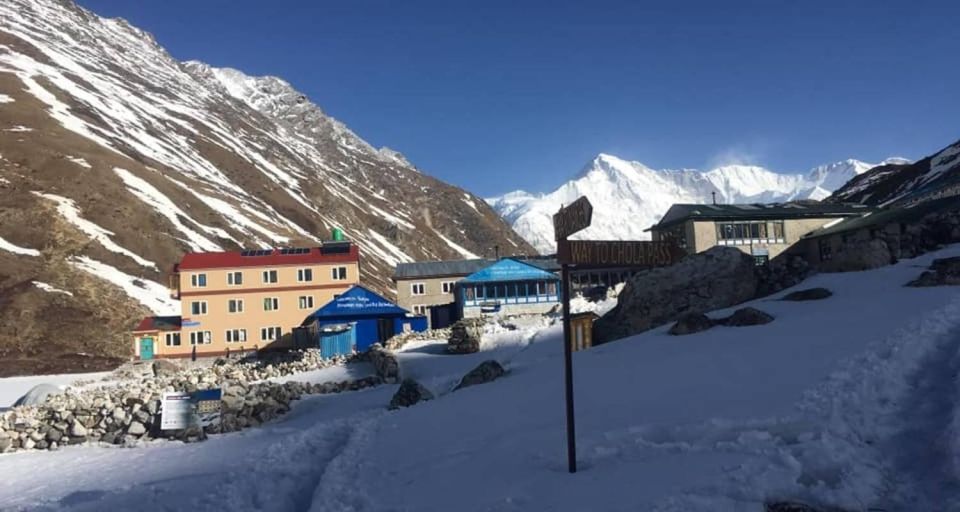
Preparing for the Everest High Pass Trek involves gathering the right gear to ensure a safe and enjoyable experience in the challenging Himalayan terrain. Essential items can make a world of difference on this adventure.
Here’s a helpful checklist:
-
Sturdy hiking boots: Provide ankle support and grip on rocky paths.
-
Thermal layers: Keep trekkers warm in fluctuating temperatures.
-
Waterproof jacket: Protects against sudden rain and wind.
-
Sleeping bag: Ensures comfort during cold nights at high altitudes.
-
First aid kit: Addresses minor injuries and health issues promptly.
Best Time to Trek
The best time to trek the Everest High Pass Trek is during the spring and autumn seasons, when the weather is generally stable and temperatures are more favorable for high-altitude hiking.
Spring, from March to May, offers clear skies and blooming flora, making the trek visually stunning. On the other hand, autumn, from late September to November, provides crisp air and vibrant landscapes after the monsoon.
Both seasons ensure a lower chance of rain and snow, enhancing trekkers’ safety and comfort.
It’s essential to consider altitude acclimatization during these times, as temperatures can still drop significantly at night.
Planning the trek for these optimal periods enables trekkers to fully enjoy the breathtaking scenery and experience the vibrant culture of the region.
Safety Tips and Considerations
When embarking on the Everest High Pass Trek, it’s crucial for trekkers to prioritize their safety by acclimatizing properly and staying hydrated throughout the journey.
Trekking at high altitudes presents unique challenges, so being aware of potential hazards is essential.
Here are some key safety tips:
-
Acclimatize: Spend extra days at higher altitudes to adjust.
-
Stay Hydrated: Drink plenty of water to avoid altitude sickness.
-
Dress Appropriately: Layer clothing to adapt to changing temperatures.
-
Listen to Your Body: Pay attention to symptoms of fatigue or discomfort.
-
Travel with a Guide: Having an experienced guide ensures safety and support.
Here's a few more nearby tours and experiences we think you'll like.
Frequently Asked Questions
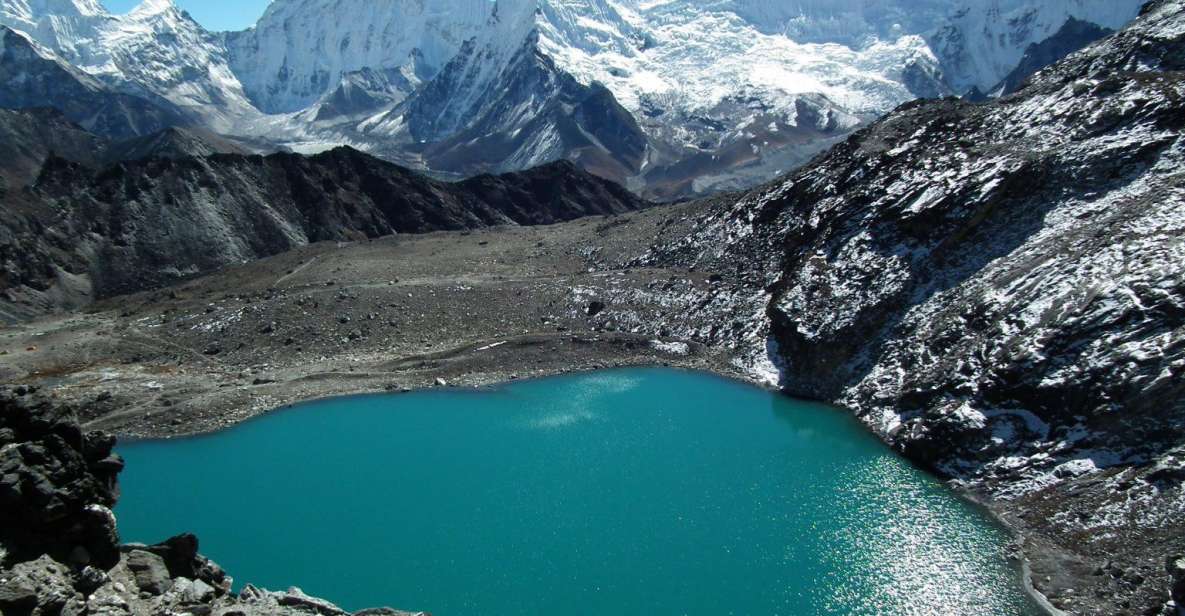
What Physical Fitness Level Is Required for This Trek?
For this challenging trek, participants need a good fitness level. Regular hiking, cardio exercises, and stamina training help prepare. It’s crucial to build endurance for long days of walking at high altitudes.
Are There Age Restrictions for Participants on This Trek?
There aren’t strict age restrictions for participants, but most guides recommend trekkers be at least 12 years old. Younger trekkers should have proper physical fitness and parental supervision to ensure a safe experience.
How Do Altitude Sickness Symptoms Manifest During the Trek?
Altitude sickness symptoms often manifest as headaches, dizziness, nausea, and fatigue. It’s crucial for trekkers to acclimatize properly, stay hydrated, and descend if symptoms worsen, ensuring their safety and enjoyment throughout the journey.
Is Wi-Fi Available During the Trek?
During the trek, Wi-Fi isn’t consistently available. While some teahouses offer service, it’s often slow and unreliable. Trekkers should prepare for limited connectivity, focusing on enjoying the journey rather than staying connected.
What Is the Policy for Cancellations Due to Bad Weather?
When bad weather strikes, the cancellation policy allows for a full refund if canceled up to 24 hours in advance. They prioritize safety and offer flexibility for travelers facing unexpected conditions.
Not for you? Here's more of our most recent tour reviews happening neaby
- Kathmandu: Everest Base Camp Kala Patthar 15-Day Trek
- Nepal Spiritual Laughing 14 Day Trekking Program
- Everest Base Camp Helicopter Shared Tour
- Kathmandu: 14-Day Langtang Gosaikunda Trek
- All Package Nepal Annapurna View Trekking & Tour
- Bhutan, “The Land of Thunder Dragon”
- 15 Day Annapurna Circuit Trek From Kathmandu
- Manaslu Circuit Trek Conquer the Majestic
- From Kathmandu :11-Day Guided Manasalu Circuit Trek
- Nepal Holiday Honeymoon Tour Package With Activities
- From Kathmandu: 18 Day Annapurna Circuit & Tilicho Lake Trek
- Manaslu Trekking Tour From Kathmandu
- Mera Peak Expedition – Everest, Nepal
- Everest Base Camp Trek
- Langtang Valley Trek 11 Days
Recap
In summary, the Everest High Pass Trek offers an incredible blend of adventure, stunning landscapes, and rich culture.
Those ready to take on the challenge will be rewarded with unforgettable memories and breathtaking views.
With careful planning and the right gear, trekkers can fully embrace the magic of the Himalayas.
Whether it’s the high passes or the serene Gokyo Lakes, this trek promises an experience that will linger long after the journey ends.
